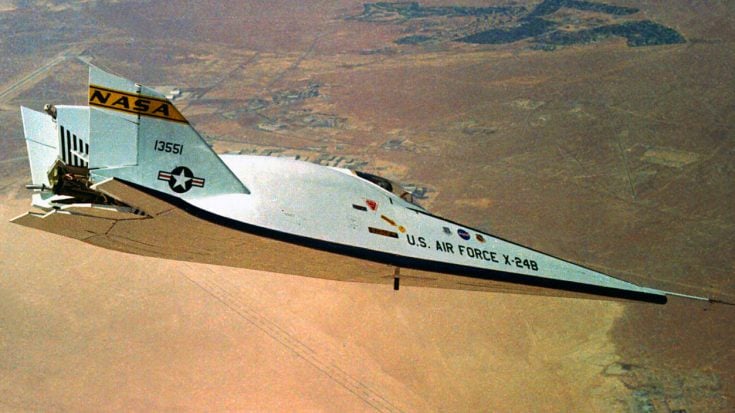X-24B – The Bizarre Design That Redefined Space Travel

(NASA/DFRC)
Flatiron.
The 1970s was a time when the space program was still in full swing, there was much to learn and new trials to undertake. NASA was looking to make space shuttle flight safer and more efficient so a variety of designs were tested. A new kind of jet was created to suit NASA’s needs for better flight and that was the X-24B.
The Martin Marietta X-24B was an advancement in lifting body aircraft where the aircraft itself produces lift rather than a propulsion system. The frame of the aircraft lacks wings and its shape provides a lift to smooth out its direction during a high-speed re-entry. The design of the X-24B was made to demonstrate that re-entry and landings could be completed safely when the aircraft was underpowered. Space shuttles are known for having lower lift-to-drag ratios so the X-24B was built in the same manner.
“These precise touchdowns demonstrated to the shuttle program that a configuration with a comparatively low lift-to-drag ratio could land accurately without power, thereby convincing the shuttle authorities that they could dispense with the air-breathing jet engines originally planned for the orbiters.”
– R. Dale Reed (Dryden Engineer)
Although this aircraft was never put into formal use, its design proved to be vital for the evolution of the space program. Test footage of the X-24B can be viewed in the following clip.




















